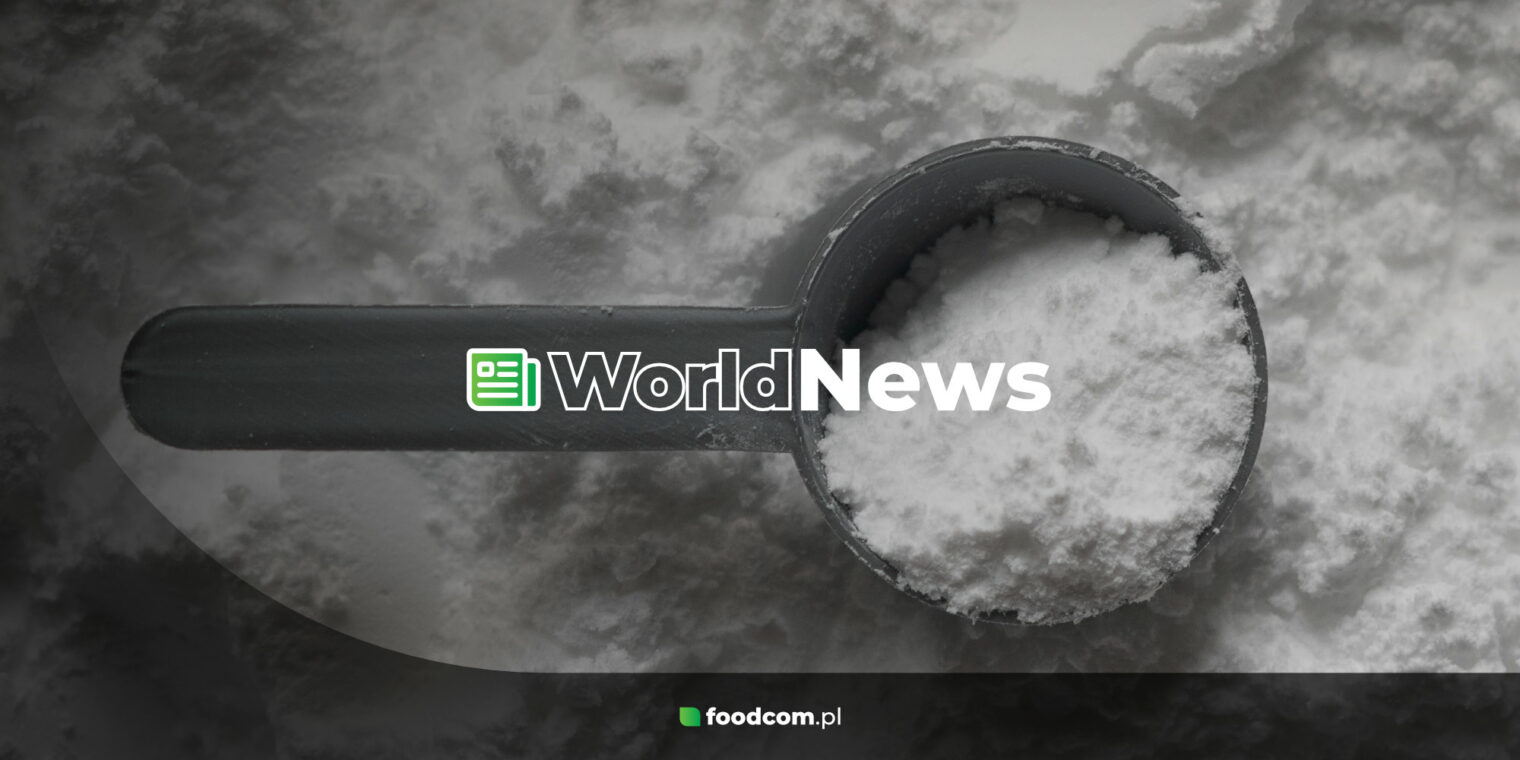Summary
Table of contents
This is our international overview on milk and whey powders market. We present you with the most important data in this topic.
Skimmed Milk Powder (SMP)
In 2020, the overall global exports of SMP have declined by 2.3% compared to the previous year and amounted to a total of 2,5 million tonnes. The lowered demand came from major importers especially in Russia where domestic production of SMP rose between May and August, and Mexico where local products met the demand from the food processing industry.
Main trade flows of SMP
While in the previous years the EU led the way on the global market, during the pandemic the USA almost caught up as the EU curbed the SMP exports by 13.9% to 828,000 tonnes in relation to 2019. In the same period, the USA exported 819,00 tonnes – an increase of 16.2% compared to 2019. New Zealand and Australia are still major players on the market with 356,000 tonnes and 130,000 tonnes of SMP exports respectively in 2020.
The overall decreased export of SMP from the EU was largely due to lower purchases from the partners in East Asia – notably Indonesia, Malaysia, and the Philippines. However, in January and February 2021 the situation has reversed with the latter increasing the purchases by 126% compared to the same period last year while the exports to Indonesia also grew by 68%. Other significant increases in the first two months of 2021 came from Pakistan and Yemen with growths equal to 134% and 90.89% respectively.
Quotations
The average price for SMP on the global market was $2,440 per tonne in 2019. Last year, the highest price was noted in January at $2,927 per tonne while the lowest was recorded in April at $2,279 per tonne. During the first months of 2020 and similarly to other milk products, the SMP prices fell due to declined purchases from major importers. However, from May onward, the prices began to escalate again and eventually lifted the annual average by 6.8% owing to supply shortage in Europe and revived demand from Middle Eastern and Asian importers.
Full Cream Milk Powder (FCMP) / Whole Milk Powder (WMP)
In 2020, the overall global exports of WMP amounted to over 2,67 million tonnes – an increase of 1.9% from the previous year. The increased demand came from major importers in the Middle East and Africa including Saudi Arabia, Algeria, Sudan, Oman, Nigeria but also Brazil and Australia. On the Asian market, the demand for WMP was lower from key importers such as Bangladesh, China, Singapore, and Indonesia.
Worldwide situation
During the pandemic, the highest growth in WMP exports was recorded in Argentina in 2020 where the shipments grew by 53.5% compared to 2019 and amounted to around 148,000 tonnes. This was largely due to increased demand from Brazil and Algeria. The United Arab Emirates exported similar amounts of the product – in 2020 the country shipped 141,000 tonnes of WMP. On the global market, New Zealand has been the key exporter of WMP for years with average yearly shipments of 1,35 million tonnes of WMP between 2016 and 2018. In 2020 the country continues to be the leader with 1,53 million tonnes of the product shipped which accounts for 57% of the global exports that year. The slight year-on-year decline of 0.2% was due to the lower global trade evoked by the pandemic. The WMP from New Zealand reaches mainly China – in 2020 the overall purchases amounted to 652,989 tonnes. The data from January to March 2021 shows a 43.92% increase in WMP orders from China compared to the same period last year. However, the most significant growth in buyers of New Zealand comes from Indonesia where in the first three months of 2021 the orders grew by 69.18%.
European market
The European Union (including the UK and Northern Ireland) exported 332,000 tonnes of WMP – an increase of 11.5% compared to the previous year. The European product mainly reached the countries in the MENA region and China. The currently leading buyer of WMP from the EU is Oman – in January and February 2021 the country purchased a total of 11,067 tonnes of the product – an increase of 38% compared to the same period in the previous year. The major suppliers to Oman were Sweden, Denmark, Germany, and Belgium. At the beginning of 2020, Nigeria was the second-largest buyer of the WMP from the EU but in January and February 2021 China climbed to the second position with orders for 2,728 tonnes of the product – a 21% growth from last year’s numbers in that period. Nigeria fell to third place with purchases of 2,599 tonnes. Comparing year-on-year change in exports in January and February, the highest growth was noted from Cuba – the orders went up from 435 tonnes in 2020 to 1,660 tonnes in 2021 while the sharpest decline of 56% came from Kuwait.
Quotations
The average price for WMP on the global market was $3,186 per tonne in 2019. Last year, the highest price for the product was recorded in January at $3,241 per tonne and the lowest was noted in May at $2,759 per tonne. The average annual price for WMP dropped by 4.5% in 2020 and was caused by lower shipments to major importers in Asia such as China, Malaysia, Bangladesh, and Singapore.
Fat Filled Milk Powder (FFMP)
Last year, the total global exports of FFMP equaled 2,720,000 tonnes increasing from 2,704,000 tonnes in 2019. In 2020, the total export of EU-origin FFMP amounted to 1,141,473 tonnes marking an increase of 0.48% from the previous year. In January and February 2021, the EU exported 190,000 tonnes of the product compared to 197,000 tonnes shipped in the same period last year.
China – an important player
The United States imported a total of 55,000 tonnes of the product between January and March 2021 increasing from 45,000 tonnes imported in the first three months of 2020. Over 54% of the shipments came from Canadian suppliers while 8% was ordered from China.
In the first three months of 2021, China increased the orders for FFMP from the Netherlands to 3,061 tonnes – an increase of 33,67% from the same period last year. New Zealand was therefore dethroned to second place with 2,947 tonnes of the product supplied at the same time. On the global scale, Taiwan increased their deliveries of FFMP to China by 359% in the first three months of 2021. France supplied 159% more product than in January to March 2020 and ranked as the third-largest supplier with 2,887 tonnes delivered to China.
Caseins and caseinates (incl. rennet casein and acid casein)
In January and February 2021 New Zealand led the way in global export of casein and caseinates with 14,742 tonnes shipped marking a 23% decrease from the same period last year. At the same time, the EU managed to increase the deliveries of casein and caseinates by 2% to a total of 10,890 tonnes. Canada increased the shipments by 106% while Chinese deliveries declined by 69%. However, the highest increase was seen in India from just 2 tonnes of the product shipped in January 2020 to around 424 tonnes in the first month of 2021.
At the beginning of 2021, among the major importers of caseins and caseinates, the United States still leads the way with orders for a total of 10,686 tonnes of the product of which 47% came from the EU. China places second with an increase of 82% in casein and caseinates purchases compared to Jan-Feb 2020 for 7,363 tonnes of these commodities. Chinese importers are becoming increasingly interested in the EU product – 46% of the shipments in January and February came from the EU compared to 30% in the same period last year.
Lactose
Main exporters
In the first two months of 2021 the United States exported the most lactose on the global market with shipments for a total of 51,413 tonnes marking a 21% decrease compared to the same period last year. EU (without the UK) ranked second with 39,727 tonnes of exported lactose and a 7% decrease from January and February last year. New Zealand placed third with 3,901 tonnes and a growth of 48%. Other significant increases came from India where the shipments grew by 69% and Turkey where exports increased by 188%.
Main importers
In terms of imports, New Zealand decreased orders for lactose in January and February 2021 by 21% compared to the same period last year. In total the country imported 14,275 tonnes of the product of which 46% came from the EU – an increase from 35% in Jan-Feb 2020. The largest orders on the global market made in that period came from China for a total of 14,678 tonnes of which 32% came from the EU. The changes in orders varied between countries in the first two months of 2021, but it is evident that the demand for the EU-origin product is increasing even if the total weight of orders is declining. The share of lactose shipments from the EU increased in Jan-Feb 2021 among almost all major importers. The largest change is noted in shipments to Indonesia where in January 2020 only 17% of lactose orders came from the EU and in the first month of 2021 that number grew to 45%. In the same period, India increased their imports of EU-origin lactose from 44% to 49% even though the overall orders fell by 39% to 3,396 tonnes in January 2021.
Quotations
Between January and May 2021, the average monthly price for lactose was $945 per tonne – an increase of 29.44% compared to the same period last year. The most recent price from May 2021 is $992 per tonne of the product.
Whey Powders
Main exporters of whey powders
In 2020, the world annual export of whey amounted to 1,94 million tonnes increasing from 1,72 million tonnes in the previous year. The world export of WPI was 115,000 tonnes growing from 95,000 tonnes in 2019. The United States exported a total of 150,000 tonnes of whey powder between January and March 2021 of which 140,000 tonnes were sweet dairy whey and WPC while the shipments of whey protein isolate amounted to 16,000 tonnes. For both categories, the orders came mainly from China which increased the purchases for US-origin whey powder by 116% and by 67.21% for WPI in that period.
New Zealand
New Zealand shipped 25,000 tonnes of whey powder in the first three months of 2020 compared to 27,000 tonnes in the same period this year of which 13,789 tonnes reached the United States. In the same period, China increased the orders for New Zealand whey powder by 72.97% while Indonesia reduced the purchases by 70.86%. China is also the key buyer of WPI from New Zealand with orders for 2,576 tonnes in the first three months of 2021 – a growth of 79.65% from last year’s numbers in the same period. The major changes in orders for New Zealand WPI came from South Korea and the Netherlands, increasing the purchases by 436% and 233% respectively compared to the same period in 2020.
Main importers of whey powders
In terms of imports, China is the global leader in importing whey powder as an animal feed additive. The outbreak of the African Swine fever reduced the shipments but only for a short while as the demand is increasingly growing. The US ordered 22,000 tonnes of whey powder between January and March 2021 decreasing the shipments from Germany by over 88% in place of enhanced deliveries from Denmark by 51.16%. While New Zealand is still the largest supplier of WPI to the United States with orders up by 116% in January-March 2021, Denmark ranks second with an increase of 38,18% and a total of 603 tonnes of the product delivered. Belarus imports whey powder almost exclusively from Russia, increasing the orders from 402 tonnes in Jan-Mar 2020 to 999 tonnes in the first three months of 2021.
Quotations
While in 2020 the EU price for whey powder was relatively stable between €72-82 per 100 kg and amounted to an average of €76,1 per 100kg, it started rapidly growing in 2021 with the latest price from May 2021 at €100 per 100 kg. Between January and May 2021, the average monthly price for whey protein isolate in the US equaled $2,290 per tonne – an increase of 4.05% from the same period last year.
Outlook
The major exporters of dairy products including the European Union, New Zealand, and the United States are expected to further dominate the market in the next couple of years. Argentina is increasing the shipments of WMP and is expected to own 5% of the global exports by 2029. Belarus is tightening trade relations with Russia and is expected to be the country’s main supplier of dairy products. China will remain the key importer of dairy goods, especially WMP. The country is also implementing a new customs protocol that will allow diversifying its import sources of whey powder. In the near future, the product is expected to come from such countries as Vietnam, Croatia, Kazakhstan, Serbia, and Slovakia. The country’s efforts toward higher domestic production are expected to decrease imports of WMP, especially from New Zealand. The United States and Oceania are expected to remain key suppliers of milk powders to the countries in the South-East Asia region.
The pandemic has evoked significant disruptions in the international dairy trade and still causes many uncertainties for the forthcoming period. The local constraints may further disrupt the supply chain in given regions or on the global scale. Climate changes and unexpected weather phenomena such as floods or droughts could disturb milk production resulting in price volatility. The legislative efforts to minimize the spread of animal diseases such as African Swine Fever may curb the trade of pasture compounds.
Categories:








